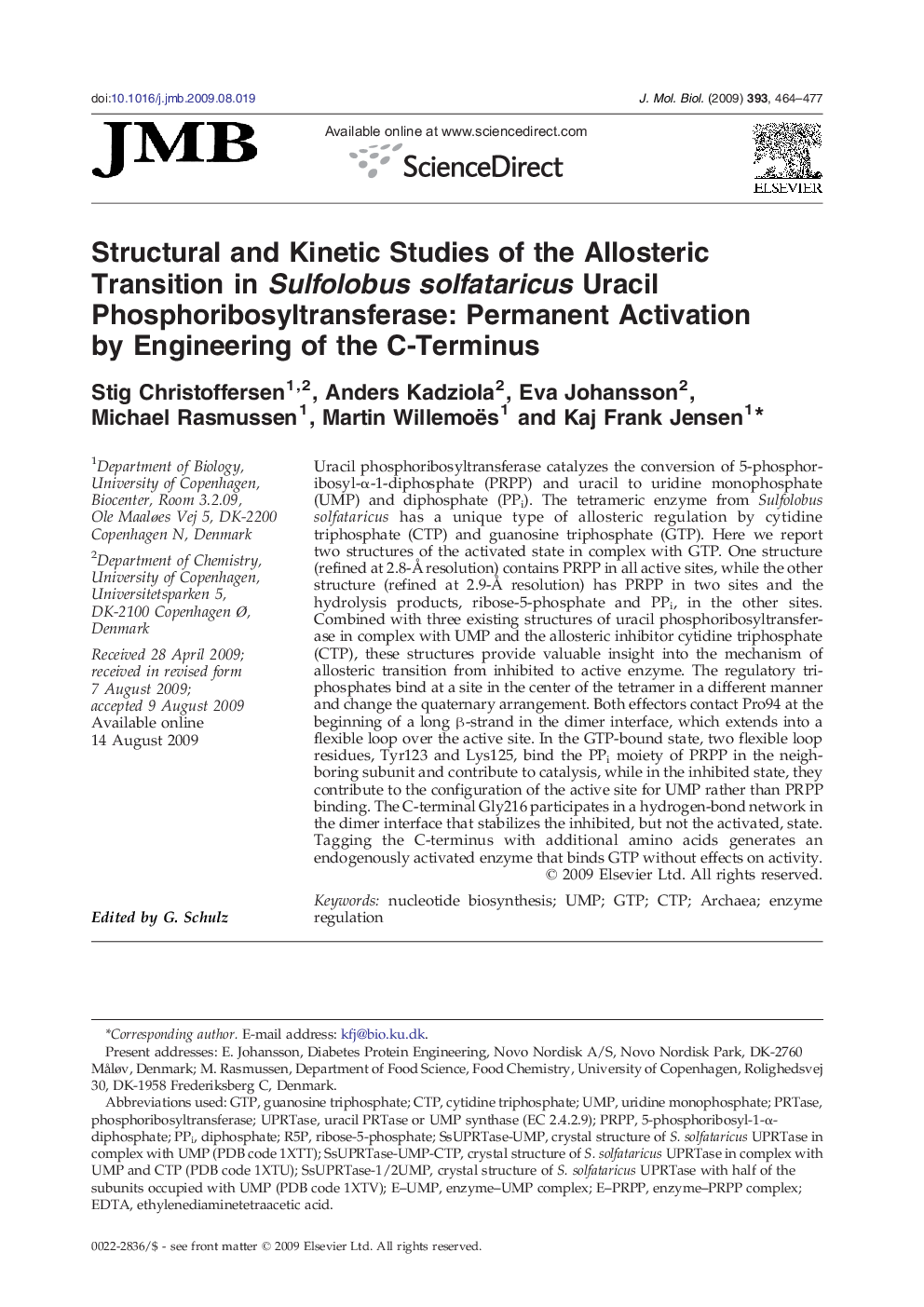| کد مقاله | کد نشریه | سال انتشار | مقاله انگلیسی | نسخه تمام متن |
|---|---|---|---|---|
| 2186210 | 1096040 | 2009 | 14 صفحه PDF | دانلود رایگان |

Uracil phosphoribosyltransferase catalyzes the conversion of 5-phosphoribosyl-α-1-diphosphate (PRPP) and uracil to uridine monophosphate (UMP) and diphosphate (PPi). The tetrameric enzyme from Sulfolobus solfataricus has a unique type of allosteric regulation by cytidine triphosphate (CTP) and guanosine triphosphate (GTP). Here we report two structures of the activated state in complex with GTP. One structure (refined at 2.8-Å resolution) contains PRPP in all active sites, while the other structure (refined at 2.9-Å resolution) has PRPP in two sites and the hydrolysis products, ribose-5-phosphate and PPi, in the other sites. Combined with three existing structures of uracil phosphoribosyltransferase in complex with UMP and the allosteric inhibitor cytidine triphosphate (CTP), these structures provide valuable insight into the mechanism of allosteric transition from inhibited to active enzyme. The regulatory triphosphates bind at a site in the center of the tetramer in a different manner and change the quaternary arrangement. Both effectors contact Pro94 at the beginning of a long β-strand in the dimer interface, which extends into a flexible loop over the active site. In the GTP-bound state, two flexible loop residues, Tyr123 and Lys125, bind the PPi moiety of PRPP in the neighboring subunit and contribute to catalysis, while in the inhibited state, they contribute to the configuration of the active site for UMP rather than PRPP binding. The C-terminal Gly216 participates in a hydrogen-bond network in the dimer interface that stabilizes the inhibited, but not the activated, state. Tagging the C-terminus with additional amino acids generates an endogenously activated enzyme that binds GTP without effects on activity.
Journal: Journal of Molecular Biology - Volume 393, Issue 2, 23 October 2009, Pages 464–477